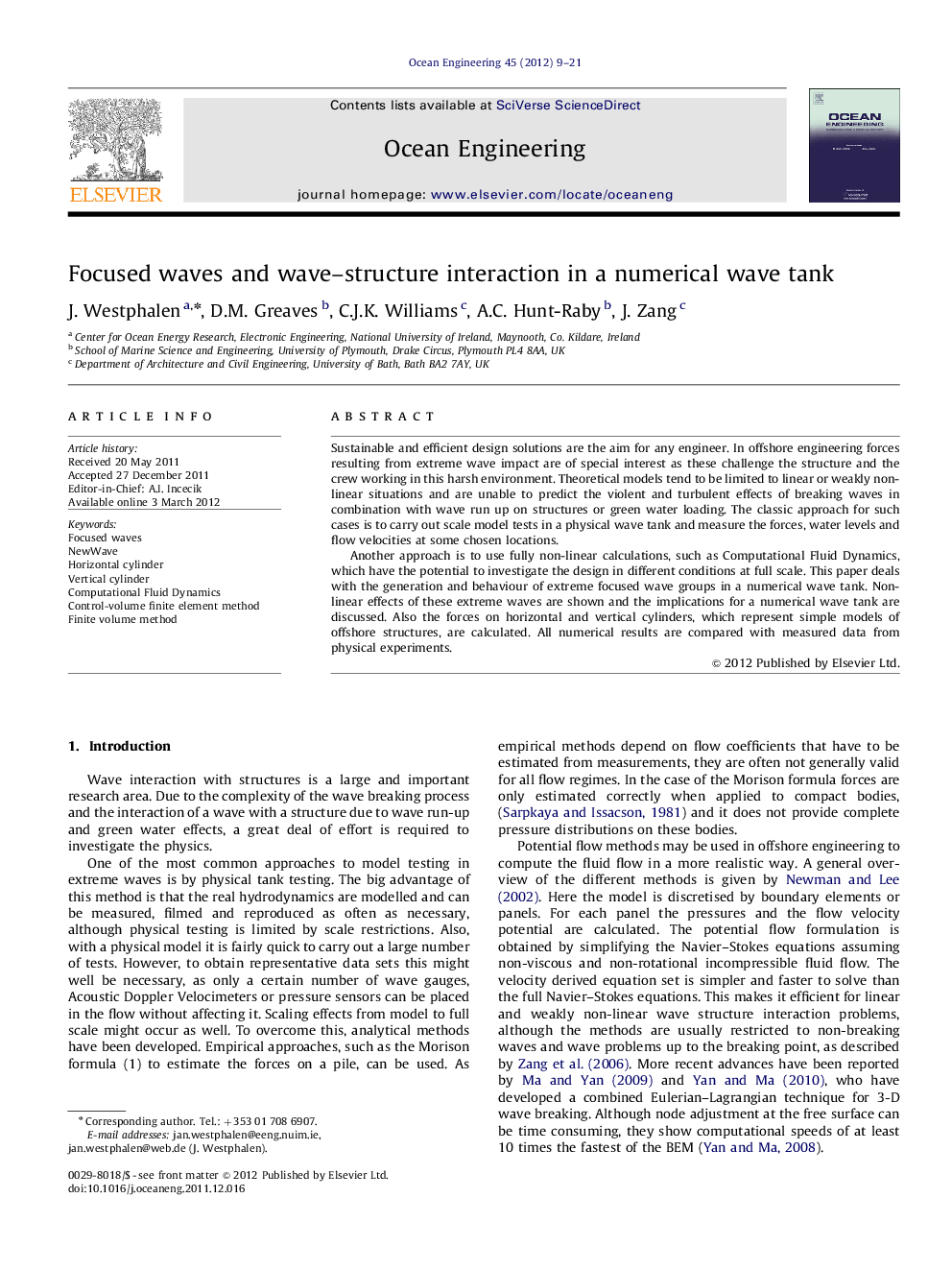| Article ID | Journal | Published Year | Pages | File Type |
|---|---|---|---|---|
| 1726295 | Ocean Engineering | 2012 | 13 Pages |
Sustainable and efficient design solutions are the aim for any engineer. In offshore engineering forces resulting from extreme wave impact are of special interest as these challenge the structure and the crew working in this harsh environment. Theoretical models tend to be limited to linear or weakly non-linear situations and are unable to predict the violent and turbulent effects of breaking waves in combination with wave run up on structures or green water loading. The classic approach for such cases is to carry out scale model tests in a physical wave tank and measure the forces, water levels and flow velocities at some chosen locations.Another approach is to use fully non-linear calculations, such as Computational Fluid Dynamics, which have the potential to investigate the design in different conditions at full scale. This paper deals with the generation and behaviour of extreme focused wave groups in a numerical wave tank. Non-linear effects of these extreme waves are shown and the implications for a numerical wave tank are discussed. Also the forces on horizontal and vertical cylinders, which represent simple models of offshore structures, are calculated. All numerical results are compared with measured data from physical experiments.
► We use two commercial CFD packages to model wave–structure interaction. ► Extreme focused waves are generated and regular waves interacting with fixed cylinders. ► Use of second order wave signal could improve agreement with physical tank tests significantly. ► Highly non-linear effects such as wave breaking and secondary load cycle can be modelled.
